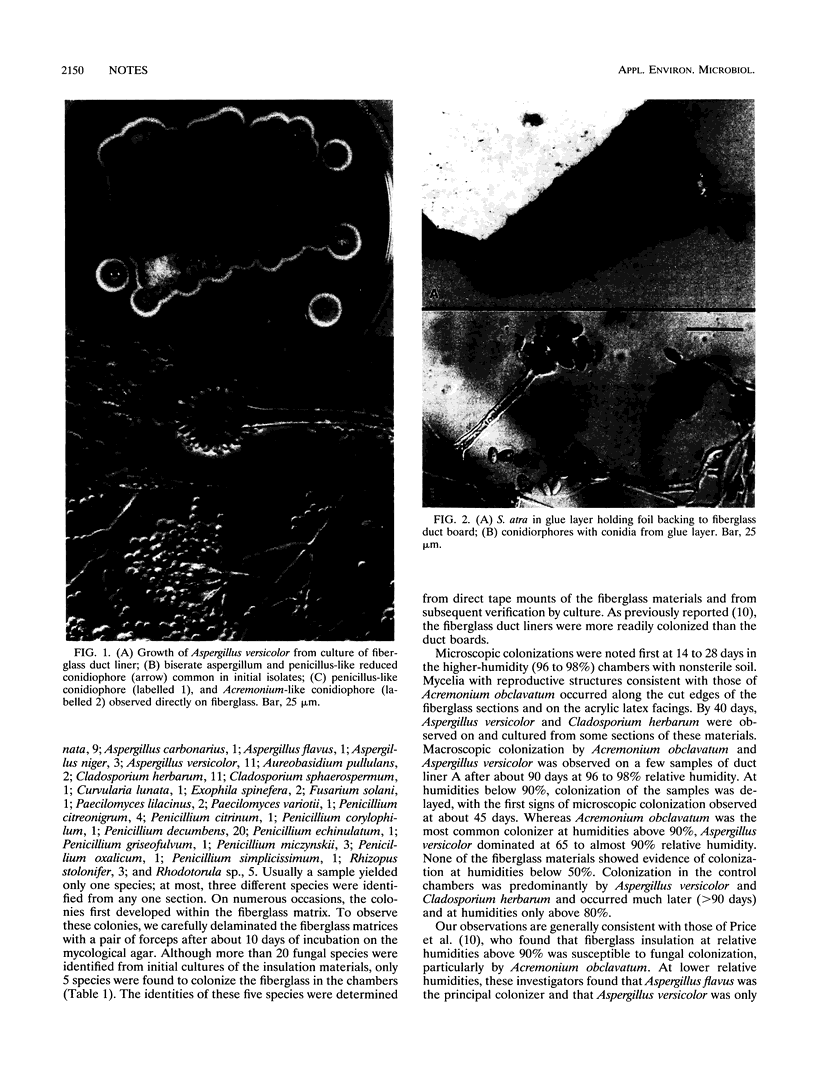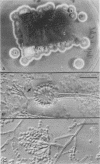Abstract
Fiberglass duct liners and fiberglass duct boards from eight buildings whose occupants complained of unacceptable or moldy odors in the air were found to be heavily colonized by fungi, particularly by Aspergillus versicolor. Unused fiberglass was found to be susceptible to fungal colonization in environmental chambers dependent upon relative humidity. No colonization was observed at relative humidities below 50%.
Full text
PDF


Images in this article
Selected References
These references are in PubMed. This may not be the complete list of references from this article.
- Ahearn D. G., Simmons R. B., Switzer K. F., Ajello L., Pierson D. L. Colonization by Cladosporium spp. of painted metal surfaces associated with heating and air conditioning systems. J Ind Microbiol. 1991 Nov;8(4):277–280. doi: 10.1007/BF01576067. [DOI] [PubMed] [Google Scholar]
- Pier A. C., Richard J. L. Mycoses and mycotoxicoses of animals caused by aspergilli. Biotechnology. 1992;23:233–248. [PubMed] [Google Scholar]
- Samet J. M., Marbury M. C., Spengler J. D. Health effects and sources of indoor air pollution. Part I. Am Rev Respir Dis. 1987 Dec;136(6):1486–1508. doi: 10.1164/ajrccm/136.6.1486. [DOI] [PubMed] [Google Scholar]




